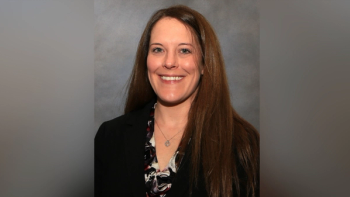
House of Representatives passes the Safeguard America's Pharmaceuticals Act
Senate combines similar legislation with a bill for compounding pharmacies
Congress-watchers can say at least one thing about the bills moving through the law-making process over the past several months: they’ve gotten much farther than previous federal efforts. But in a case of “beware what you wish for,” the bills—especially the House version, H.R. 1919, contain limitations and stretched out timetables—to 2027—that almost beggar belief.
Nevertheless (or perhaps, because of the limitations), the Pharmaceutical Distribution Security Alliance, a Washington group originally brought together by PhRMA, issued a statement commending the House vote (on June 3) and looking forward to “to ensure that a strong and effective bill is sent soon to the President for his signature.” And the Healthcare Distribution Management Assn. (HDMA) president, John Gray, issued his statement: “After nearly a decade of working to create a federal traceability standard for pharmaceuticals, HDMA is pleased by the House of Representatives vote today to pass the Safeguarding America's Pharmaceuticals Act of 2013.”
Both bills (the Senate’s version, S.957, was called the Drug Supply Chain Security Act, and has now been combined to the compounding-pharmacy bill, S.959) accomplish something that most people in pharmaceutical distribution have supported: a national licensure program for drug wholesalers, distributors and third-party logistics providers (3PLs). Currently, most aspects of drug distribution are regulated at the state level, and states vary widely in their requirements. The more controversial part of the bills is pedigree and track-and-trace rules, following efforts that began in 2004 to put a marker (the “serialized numeric identifier”) on drug packages, and then to be able to track the movement of that package through to dispensing. The House bill specifies that serial numbers need to be applied by manufacturers by 2018, and to be stored and retrievable by wholesalers by 2020. But the essential action—to require full traceability through the supply chain—is only to be “proposed” by FDA—and no earlier than January 2027. FDA is also obligated to run a series of pilot programs, and to hold semiannual public meetings between now and then.
Legislation of this type has been labeled the “
In late May, Stanley Weissler, president head of the California State Board of Pharmacy, wrote to the House committee stating that “We believe that without placing a definite outcome and a date certain into the legislation, all of that momentum [of current preparations] will be lost and all of that industry investment will be wasted. We believe the public deserves a robust supply chain security system, and we further believe that the industry needs the certainty of firm deadlines and objectives in order to adequately plan their capital investments.”
The House bill passed by voice vote; legislators seeking a stronger bill (who are mostly Democrats from California) might be holding their fire for the looming battle to reconcile the House bill with whatever comes out of the Senate. "As other nations, such as Turkey or China, tighten their national pharmaceutical distribution systems, the US might become a softer target for drug counterfeiting or diversion," comments Alan Coukell, head of the Prescription Project at Pew Charitable Trusts (Washington). His group has been advocating a more rigorous drug-tracking system--and one with a "date certain" for implementation.
Newsletter
Stay ahead in the life sciences industry with Pharmaceutical Commerce, the latest news, trends, and strategies in drug distribution, commercialization, and market access.





